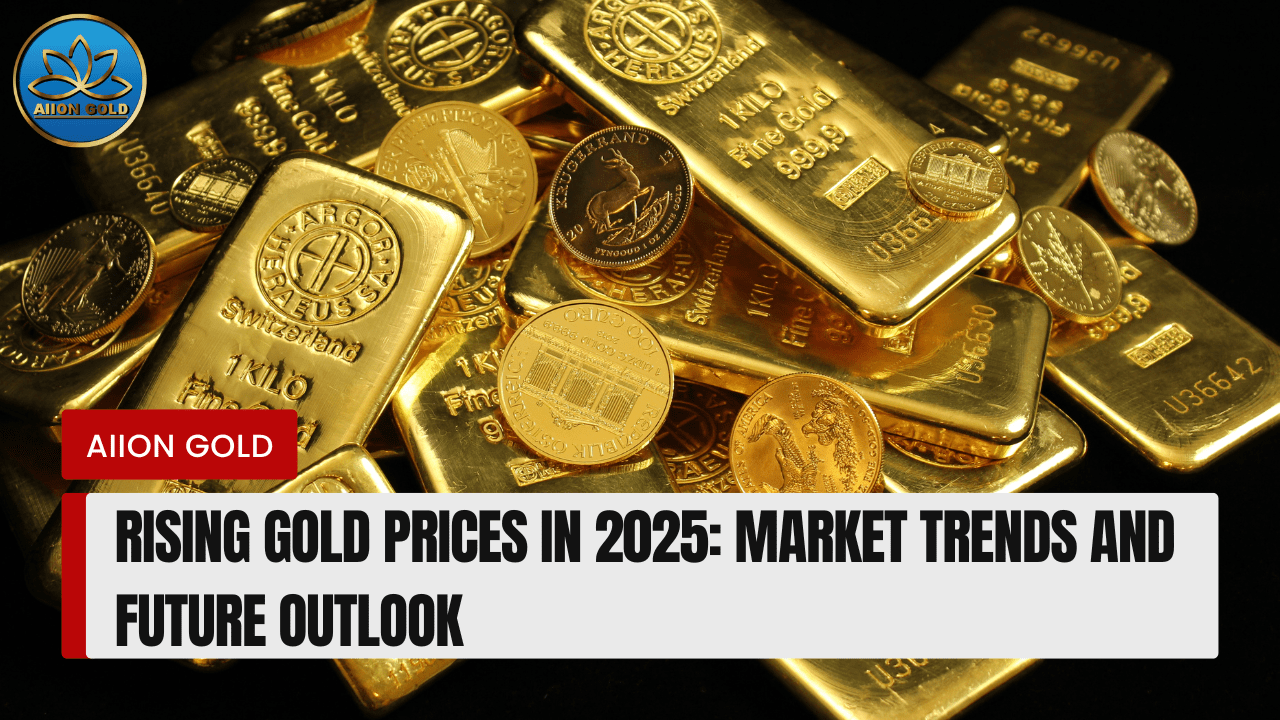Gold Prices Surge Amid Global Uncertainties: A Comprehensive Analysis


Amid rising global uncertainties, gold has reaffirmed its status as a leading safe-haven asset. As of February 2025, gold prices have rebounded significantly, reflecting the complex interplay of geopolitical tensions, economic policies, and market dynamics. This article discusses in depth the multi-faceted factors contributing to the bullish trend in gold prices and provides insight into future projections.
As of February 17, 2025, gold prices have reached unprecedented levels, with spot gold trading at around $2,899.73 per ounce. This represents a substantial increase compared to previous years, underscoring gold’s resilience amid global economic fluctuations. The SPDR Gold Shares ETF (GLD), a leading gold-backed exchange-traded fund, is currently at $266.29, reflecting the upward movement of gold prices.
The recent surge in gold prices can be attributed primarily to geopolitical tensions and aggressive trade policies. US President Donald Trump's imposition of a 25% tariff on steel and aluminum imports has raised fears of a global trade war, causing investors to seek refuge in gold. These protectionist measures have not only strained international relations but also caused volatility in global markets, further increasing gold's appeal as a safe investment.
Central banks around the world have significantly increased their gold reserves, driven by a desire to diversify assets and reduce the risks associated with fiat currencies. Notably, China's central bank has been a major contributor to this, with purchases averaging 730 tonnes annually, representing about 15% of global gold production. This strong demand from central banks has provided a strong basis for rising gold prices.
Monetary policies, particularly in the United States, have also played a key role. The Federal Reserve's interest rate cuts have reduced the opportunity cost of holding non-yielding assets such as gold, making it more attractive to investors. Goldman Sachs has revised its gold price forecast for early 2025 to $2,900 an ounce, citing factors such as lower global interest rates and continued central bank demand.
Investor sentiment has been bolstered by gold's performance as a hedge against inflation and currency devaluation. The VanEck Gold Miners ETF (GDX), which provides exposure to gold mining companies, is currently trading at $41.08, reflecting strong investor confidence in the sector. Analysts expect gold prices to touch the $3,000 per ounce range in the near future due to ongoing geopolitical uncertainties and strong investment demand.
Gold prices are expected to witness a sustained rise in the year 2025. Factors such as persistent geopolitical tensions, central bank diversification strategies and accommodative monetary policies are expected to sustain the bullish momentum. However, potential headwinds including a strong US dollar and changes in investor risk appetite could lead to volatility. Market participants are advised to closely monitor developments and consider gold’s role in portfolio diversification and risk management.
Gold’s recent rise underscores its enduring value as a safe-haven asset amid global uncertainties. A confluence of geopolitical tensions, strategic central bank acquisitions and favourable monetary policies have pushed gold prices to record highs. As the global economic landscape continues to evolve, gold remains a key component for investors seeking stability and resilience in their portfolios.
1. Why are gold prices rising in 2025?
Gold prices are increasing due to global economic uncertainty, geopolitical tensions, central bank gold purchases, and inflation concerns. Investors are turning to gold as a safe-haven asset.
2. How high can gold prices go in 2025?
Analysts predict that gold prices could reach or exceed $3,000 per ounce, depending on factors like interest rates, market demand, and global financial stability.
3. Is it a good time to invest in gold?
Gold remains a strong investment option for diversification and wealth preservation. However, investors should consider market conditions, their financial goals, and risk tolerance before investing.
4. How do central banks influence gold prices?
Central banks accumulate gold reserves to hedge against economic risks. Increased purchases by banks like the People’s Bank of China and the Federal Reserve contribute to rising prices.
5. How does inflation impact gold prices?
Gold is often used as a hedge against inflation. When inflation rises, the value of paper currency declines, making gold a more attractive store of value, which drives up its price.
6. Can global events cause gold prices to drop?
Yes, while gold is a safe-haven asset, its price can decline due to factors like a strong U.S. dollar, rising interest rates, or improved economic stability.
7. What is the best way to invest in gold?
Investors can buy physical gold (coins, bars), digital gold, gold ETFs, or gold mining stocks. Each option has different risks and benefits.
8. Will gold remain a good investment in the long term?
Gold has historically maintained its value over time. It is likely to continue being a reliable asset for wealth protection, especially during economic downturns.